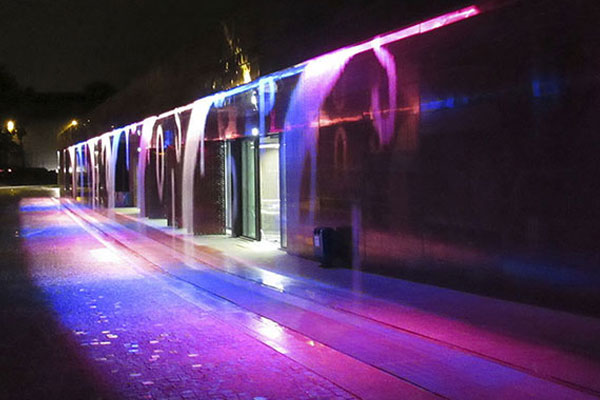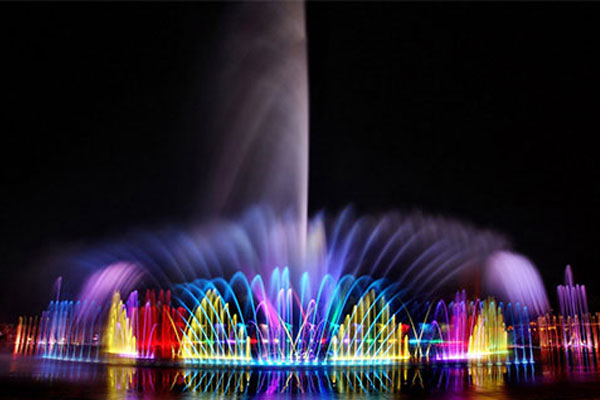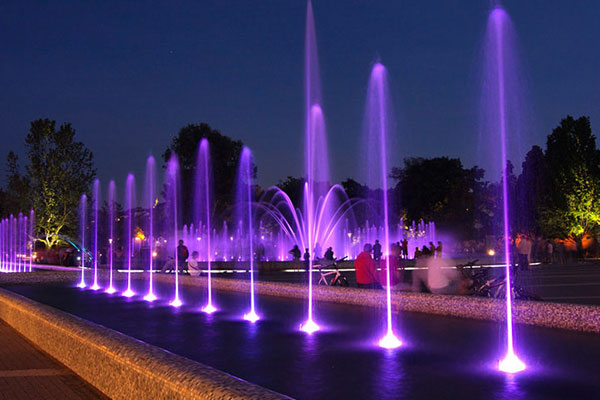16 Dec 2019
The musical fountain is controlled by the music rhythm. When the music was turned up, the fountain splashed the water column high, and the air was filled with water mist. At low tones, the water level of the fountain's splash column is low. If the music stops suddenly, the air in the water column will drop violently, splashing water, and wet bystanders, but people still do not want to leave.
The music fountain fluctuates with the music, sometimes high and low, sometimes majestic, and sometimes gentle ... water sprays from colorful, yellow, red, blue, green, and pink, very beautiful and spectacular. The shapes of the musical fountains also vary. Some look like staggered arch bridges, some look like straight columns, and some look like flowering. Whenever the fountain is accompanied by music to show its magic and charming style, many tourists watch it happily and linger.

When the sprayed water falls, the river will ripple in a circle, and people will feel that there is a paradise on the earth!
Moreover, the water quality in a musical fountain is also very important for a musical fountain. In order for the normal operation of the fountain and its constituent parts to provide good performance for many years, it is important to use the right water to prevent malfunction and rapid wear of the constituent parts of the fountain. Generally, water must have the same cleanliness, clarity, and acidity characteristics as safe drinking water, and the same calcium ratio.
1.The pH must be between 7.2 and 7.6
2.The content of any impurities in each cubic meter of water should not exceed 50 grams.
3.The water hardness per liter of water shall not exceed 180 mg Ca Co3.
4.The chlorine content per 1 liter of water must be less than 125 mg.
5.Water temperature must be between + 5ºC (41ºF) and + 35ºC (95ºF)
Water pH
This detail is usually unknown and rarely mentioned, usually because many components of the fountain (electric pumps, nozzles, diving lights, pipes, etc.) are strongly corroded and eventually stop working in the fountain. The period is shorter than one year. This is because most parts are made of bronze, brass, 304 stainless steel, etc. These metals cannot withstand high acidity. If the pH of the water is 7, it is considered neutral; if the pH is greater than 7, it is considered alkaline water.
PH is an abbreviation for hydrogen potential, and can usually be between 0 and 14 and is a value of 7 for a neutral solution such as water. If the value is between 0 and 7, the solution will be considered acidic; if the value is between 7 and 14, the solution will be considered alkaline (or alkaline). A good way to make approximate pH measurements is to use a test strip, also known as a litmus test strip. When placed in water, the tape changes its color, so it can be compared with the color scale printed on the outside of the package. Each color indicates the pH very accurately. The price of these tests is usually no higher than 1.
The cell's analyzer test suite is also quite reliable. They provide fairly approximate values and are not expensive.

Generally, when the pH value exceeds 8, the water becomes cloudy and promotes deposits in pipes, nozzles, etc. It can also cause inflammation in the eyes, ears, nose and throat. Similarly, if the pH exceeds 8, it is not necessary to add chlorine to the water, as such a high pH will prevent it from working.
If the content of impurities in the water is high (+50 gr / m3), this fact will deposit and block on the spray nozzles (especially small diameter nozzles) and pump impellers, and keep depositing. As a result, their performance will be affected and the output current will be reduced. Therefore, it is recommended to filter out the water from the building fountain, just like the water in a swimming pool. To maintain it, it is best to add a flint sand filter or similar device that can filter out all water in less than 4 hours per day. Since the total amount of water in these fountains is small (not very deep), the water purifier can be a small, low-cost device, which will make it possible to obtain clean, clean and impurity-free water.
Water hardness
Water hardness can be classified by the amount of calcium and magnesium salts it contains. This content is always measured as Ca Co3 mg per mg of water (mg / L CaCo3).
In fountains, it is not recommended to use calcium carbonate (medium hardness water) with a hardness exceeding 90 mg / L.
Therefore, in the table below, mg / l corresponds to CaCO3. If the water used in the fountain is hard or very hard, it will cause salt deposits in the subsea lamps, so they will provide less light with the same energy consumption. It also promotes calcium deposition in screw-in connectors for pipes, nozzles, etc. so they will be harder to replace or repair. These salts are especially harmful to the inside of pumps, pipes, electric pumps, etc., where salt deposits can block the entry of water, thereby reducing flow and working pressure. This may lead to eventual damage to the element.

Keywords: musical fountain
Originally published 16 Dec 2019, updated 16 Dec 2019.